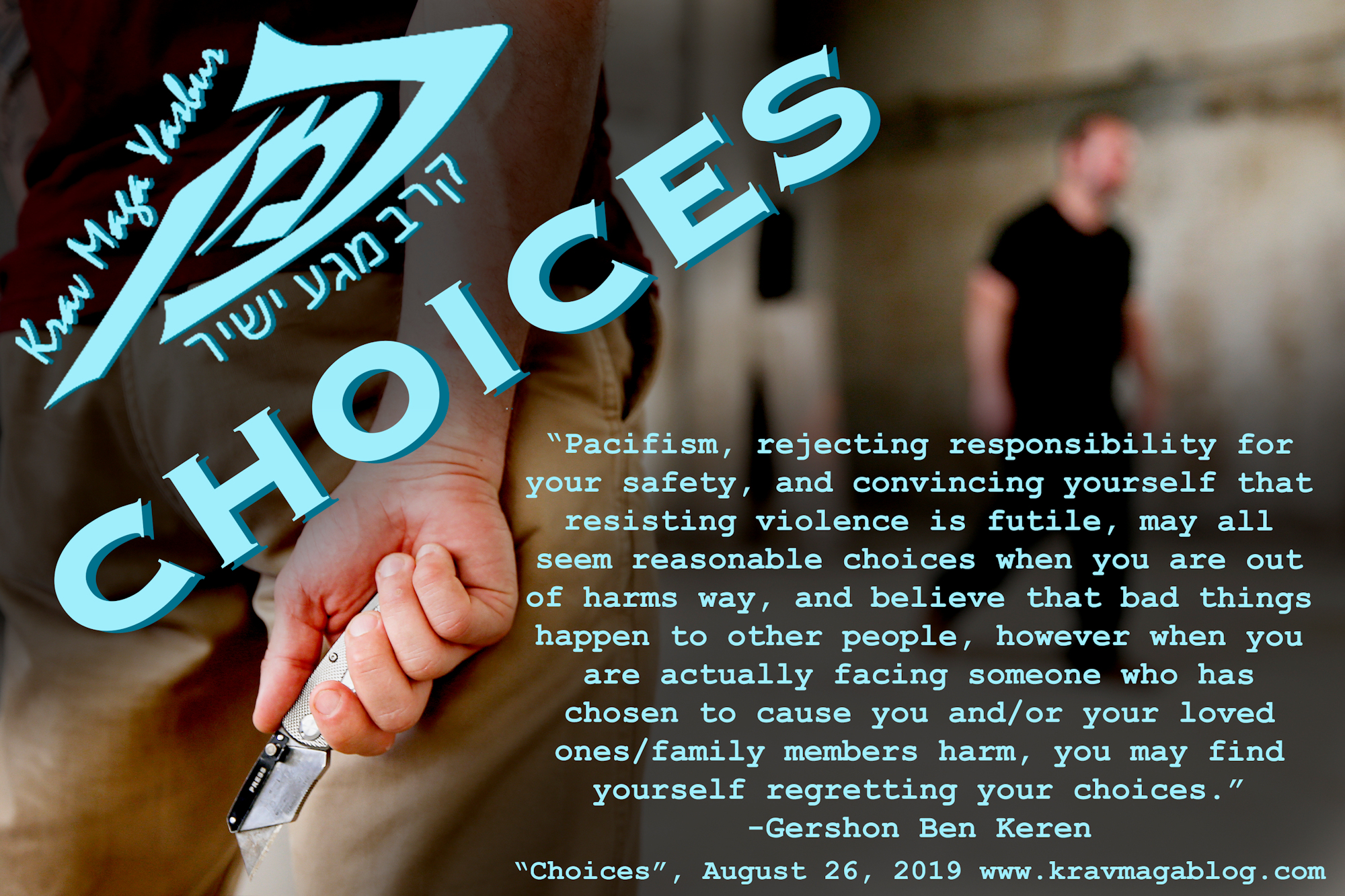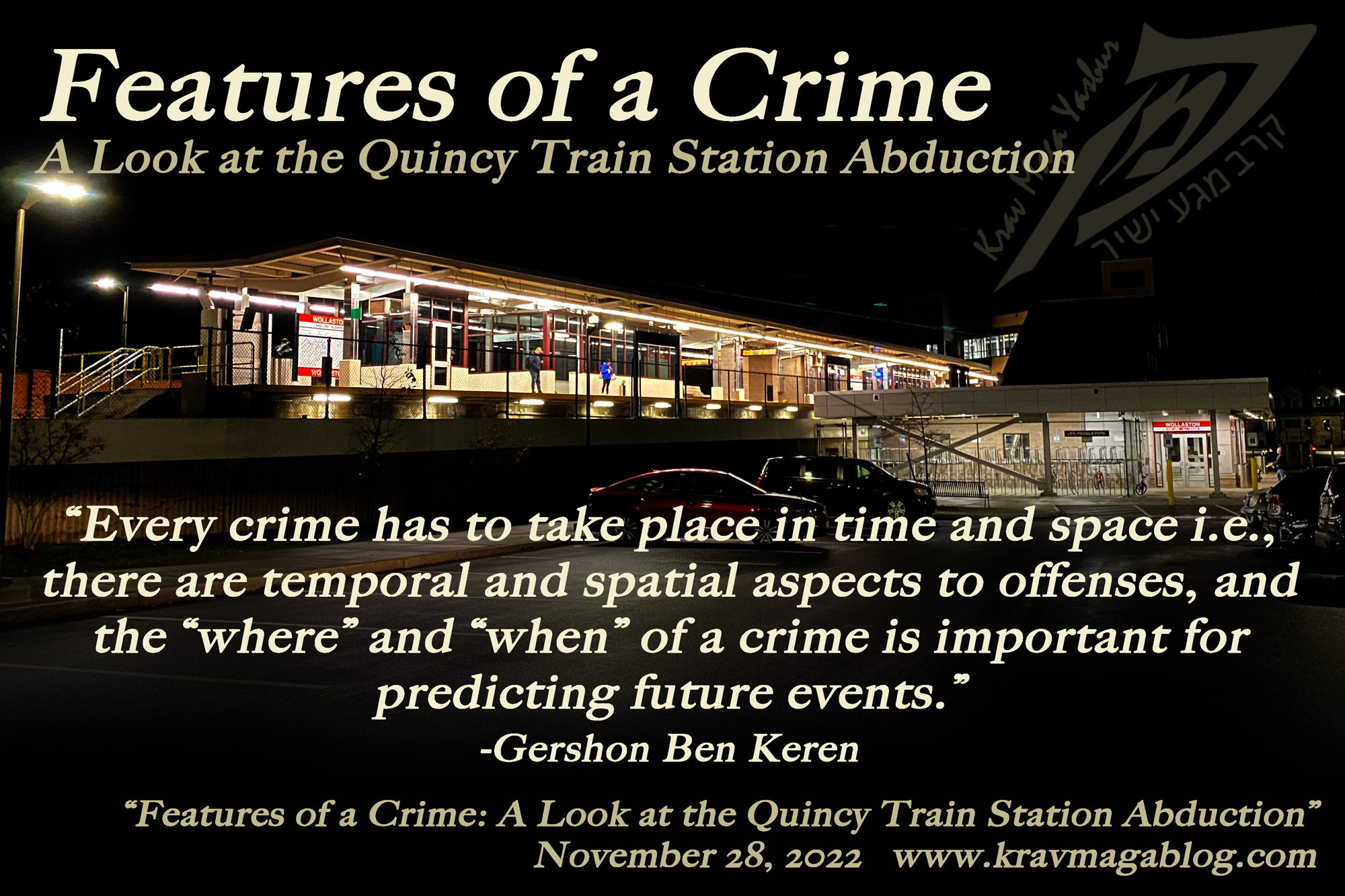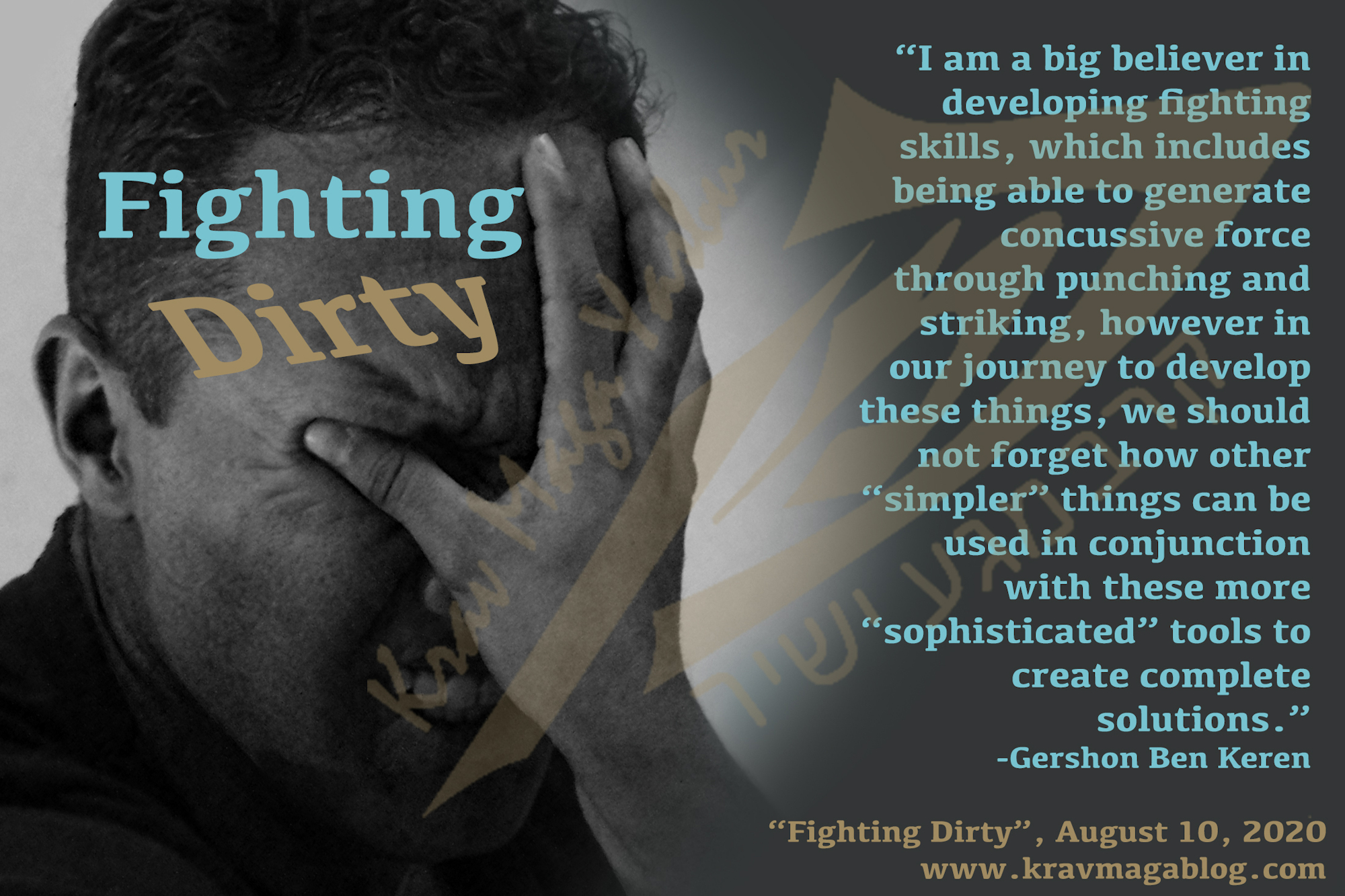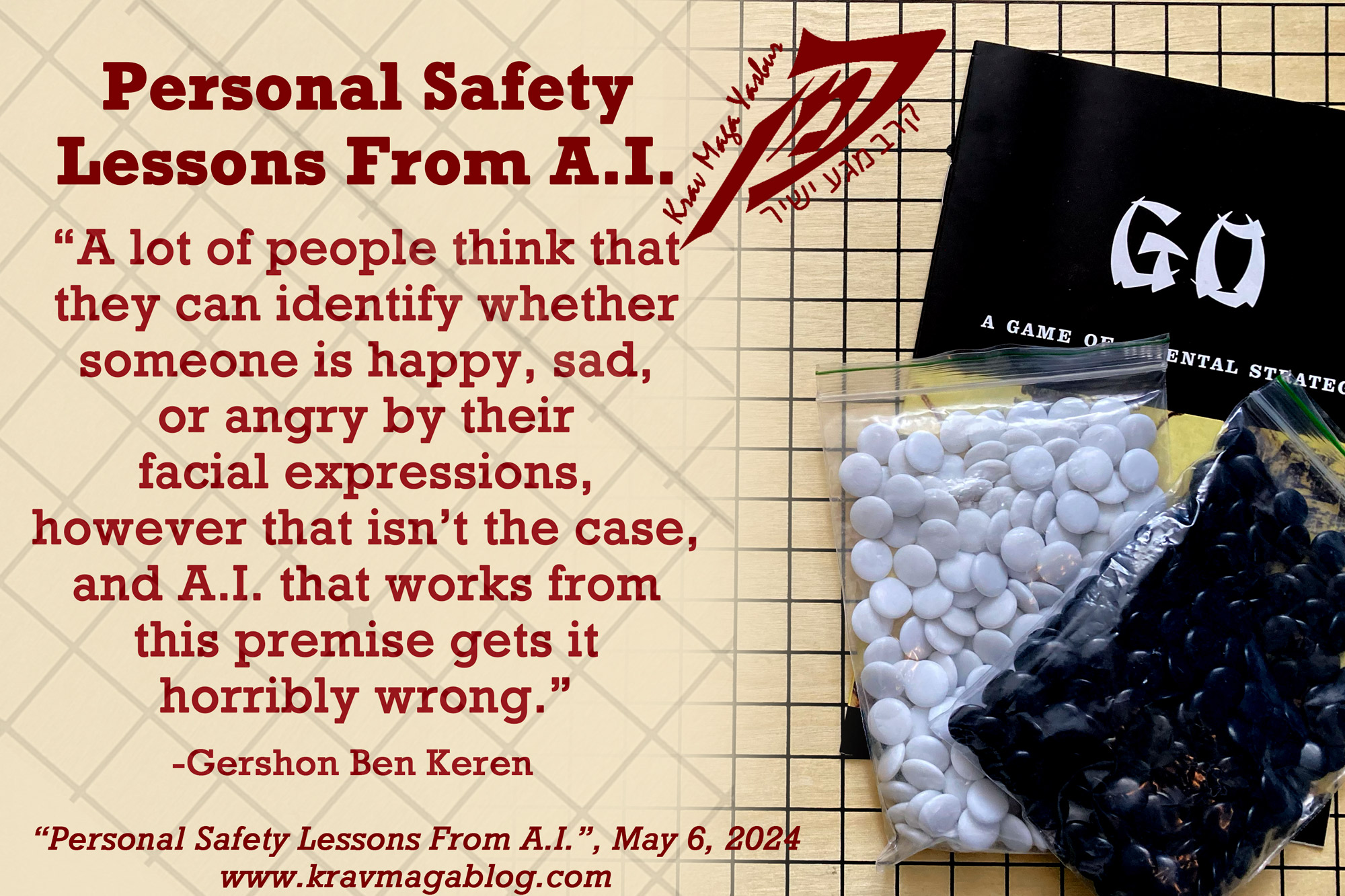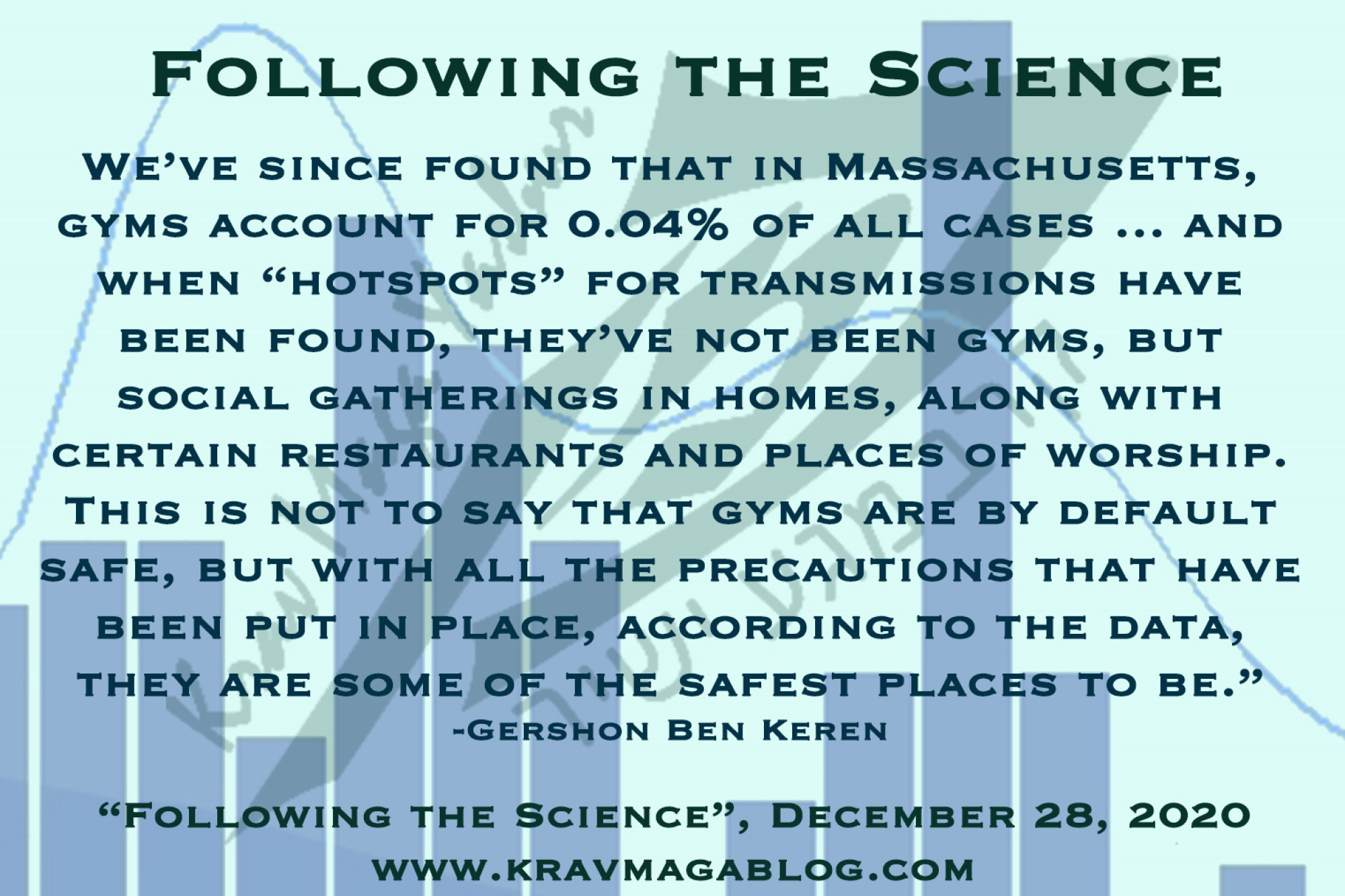Following The Science, is an article written by Gershon Ben Keren, a 5th Degree Black Belt in Krav Maga, who teaches Krav Maga in Boston, MA. He has also authored three Amazon best-Selling Books on Krav Maga.
One of the things I have heard people/politicians say over and over again during the COVID-19 pandemic, is that they’re following “the Science”. “The Science” is sometimes a YouTube clip or possibly a meme, but rarely is it a carefully researched article, with quoted sources that has been peer-reviewed i.e., there seems to be a lot of confusion, about what science is, and we seem to be at a time when a backyard experiment featuring somebody’s brother-in-law, standing on a ladder, with a piece of wet string attached to a 9-volt battery, angling a Hungry Man pie dish at the Sun counts as science etc. The self-defense/self-protection industry is often guilty of this pseudo-science approach e.g., the statistic/myth that 90% of street-fights go to the ground, comes from Rorion Gracie’s reworking of an LAPD study that looked at how many arrests ended up on the ground; an apples and oranges comparison that holds little to no relevance for the average citizen. We are also – as an industry – guilty for perpetuating other myths and stereotypes. Many martial arts kids’ programs over-emphasize “Stranger Danger” as part of their safety piece, without addressing the issue that children are most at risk of harm from those that they already know. Teaching children - and adults - that keeping secrets with adults is wrong, would take a powerful tool away from pedophiles. However, there are many parents who kick back at such things because they feel they should be exempted from such “rules”, which seriously weakens them as a tool. Accepting the facts/research and basing programs on them can be hard.
Often people have a hard job accepting that the statistics apply to their situation, and feel that whilst something may be true for others it’s not applicable to them e.g., other children may be most at risk from people they know, but that’s not true for their child etc. Science, and scientific processes, are there to prevent these confirmation biases i.e., interpreting ANY evidence, regardless of source, that confirms an existing belief or theory. When we first went into lockdown for COVID-19 in March/April 2020, gyms and martial arts studios, were some of the last places in Massachusetts to be allowed to re-open. This was at a time when we knew little about the virus, other than it was safest to be outdoors, rather than in enclosed spaces. Armed with this knowledge, there was some best-guess logic, to have gyms and studios be some of the last places to re-open. We’ve since found that in Massachusetts, gyms account for 0.04% of all cases (0.06% in New York), and when “hotspots” for transmissions have been found, they’ve not been gyms, but social gatherings in homes, along with certain restaurants and places of worship. This is not to say that gyms are by default safe, but with all the precautions that have been put in place, they are some of the safest places to be in. Yet, the Mayor of Boston, because of a rise in the number of cases in the city, chose to shut them for 3 weeks; not based on science, but on a feeling that somehow, they must be responsible etc. In an outstanding piece of logic, which demonstrates how strong confirmation biases work, and how they fight any logic; if the number of cases continue to rise – even though the gyms are shut, and therefore can’t be responsible for this – their closure will be extended. Science, and scientific process, exists to stop us falling for such fallacies, but they need us to put personal opinion aside.
When I conducted my Criminology thesis research, after doing a systematic review of previous research, I started by asking a scientific question, which was: Do offenders who commit residential burglaries, travel further distances, and engage in greater travel times, than those who engage in street robberies? This led me to make the following hypothesis: Ha1 Residential burglaries are more likely to be committed further away from an offender’s home (base), than street robberies, and the alternative hypothesis: H01 Residential burglaries are not more likely to be committed further away from an offender’s home (base), than street robberies. My “gut feel” was that burglars put more research and effort into their crimes. I couldn’t prove this though. The data – arrest data, with offense location, and offender home address – just didn’t support my hypothesis. Some interesting other findings came out of my study, in terms of certain hotspots that were related to road access/networks etc., but the answer to my original question proved inconclusive – the science told me something contrary to my original thoughts and biases, and this is the purpose of applying a scientific process to what we do. Just because we “feel” something is right, and want to believe that it is right, it doesn’t mean it is right. I still get kick-back about people phoning a friend when they sense danger, because they believe that if somebody knows where they are, then they won’t get attacked and/or that would-be assailants and predators will respect the social convention of not interrupting somebody when they are on the phone. It doesn’t matter how many instances of people being attacked whilst on the phone you share with them, their belief is that for them it would be different.
There are many instructors who are very quick to judge others who do things differently to them, and will come out with the tired old line of, “good way to get you killed” etc. without having examined what they have been taught, and teach, with a critical and scientific eye, and have not studied the context(s) and conditions where their particular solutions may fail – and all solutions have a context within which they become sub-optimal – if somebody doesn’t believe this, and/or doesn’t understand this then they are simply drinking the Kool Aid. We are – if we try – all able to take a scientific approach to what we teach, it just means we might have to accept some truths we don’t like along the way.
0 COMMENTS
